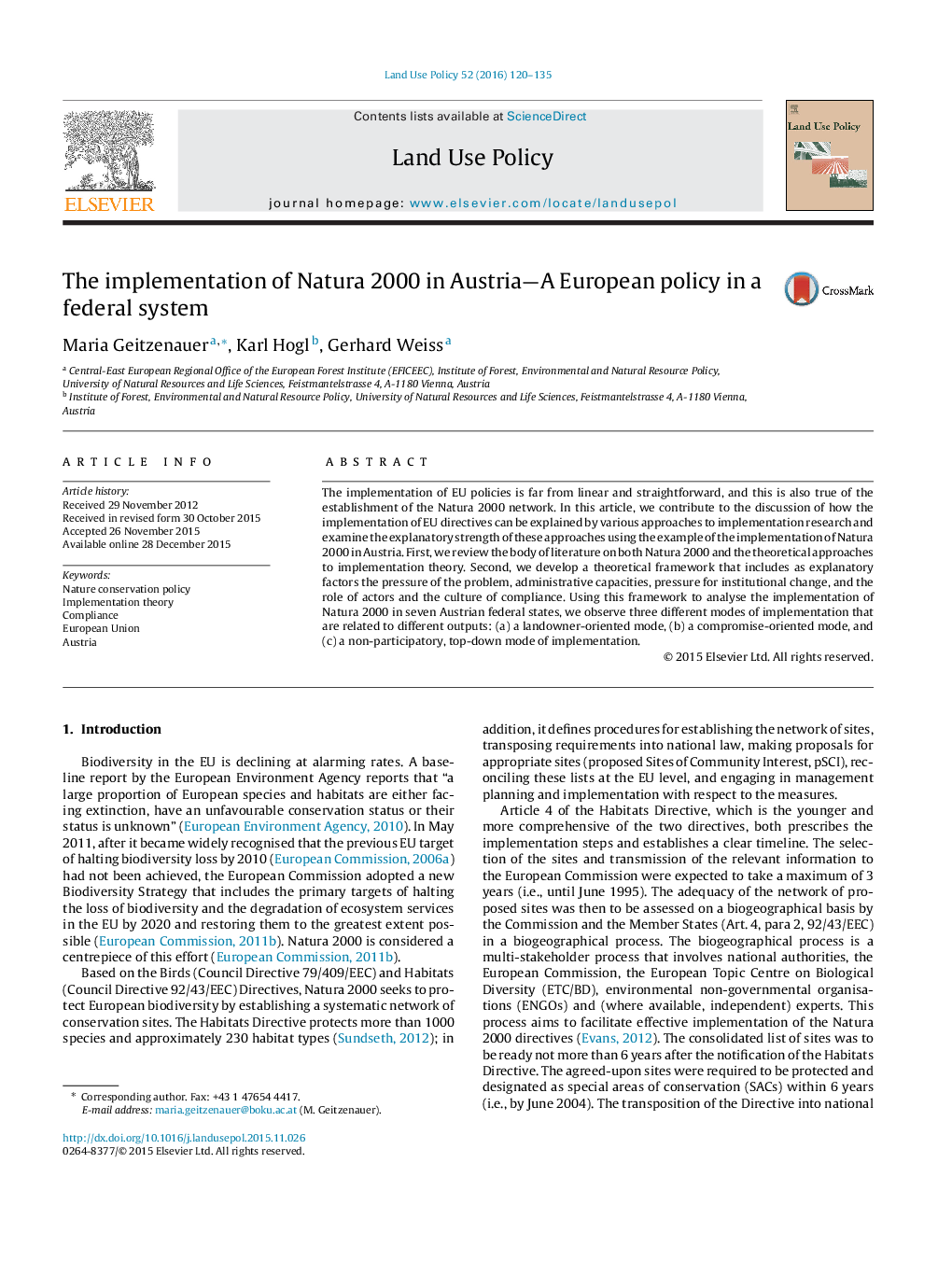| Article ID | Journal | Published Year | Pages | File Type |
|---|---|---|---|---|
| 6547437 | Land Use Policy | 2016 | 16 Pages |
Abstract
The implementation of EU policies is far from linear and straightforward, and this is also true of the establishment of the Natura 2000 network. In this article, we contribute to the discussion of how the implementation of EU directives can be explained by various approaches to implementation research and examine the explanatory strength of these approaches using the example of the implementation of Natura 2000 in Austria. First, we review the body of literature on both Natura 2000 and the theoretical approaches to implementation theory. Second, we develop a theoretical framework that includes as explanatory factors the pressure of the problem, administrative capacities, pressure for institutional change, and the role of actors and the culture of compliance. Using this framework to analyse the implementation of Natura 2000 in seven Austrian federal states, we observe three different modes of implementation that are related to different outputs: (a) a landowner-oriented mode, (b) a compromise-oriented mode, and (c) a non-participatory, top-down mode of implementation.
Related Topics
Life Sciences
Agricultural and Biological Sciences
Forestry
Authors
Maria Geitzenauer, Karl Hogl, Gerhard Weiss,
